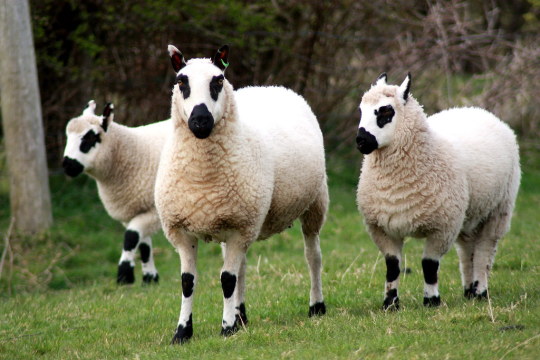My name is Faolán! ,They/Them, Irish feel free to ask questions!
Last active 2 hours ago
Don't wanna be here? Send us removal request.
Photo

just stay, just stay
2K notes
·
View notes
Photo

https://www.pinterest.com/pin/589760513690825378/
794 notes
·
View notes
Text
At dawn when bird song fills the air

A raffle price for @/lilyznow
1 note
·
View note
Text
Link for bidding : ^^^^^^^

#warrior cats#warriors#warrior cat designs#warrior cat adopts#paypal adopts#character adopt#adopts#animals
9 notes
·
View notes
Text
2 notes
·
View notes
Text
Cow relaxing time 🐄

20 notes
·
View notes
Photo


Two silver penannular brooches which date from the circa the 9th/10th century AD. Now on display at the National Museum of Ireland.
214 notes
·
View notes
Photo

Protecting animals from the evil eye’, from Ballinaboola, Co Wexford in 1938 (from O Muirithe D & Nuttal, D (1999) Foklore of County Wexford, Four Courts Press, Dublin, p. 131)
309 notes
·
View notes
Photo

The impressive remains of Rathgall fort, Co Wicklow (image Bing maps). Defined by three concentric earthen banks and located on a a relatively low hill, this Late Bronze Age site appears to have been a high status settlement (the inner stone wall is medieval). The late Professor Barry Raftery carried out a small excavation near the centre of the monument and this revealed the foundations of a very large circular house that measured c. 15m in diameter. It was defined by curving foundation trench, which would have supported walls that were probably made out of wattle panels, supported by wooden posts. The entrance into the building faced eastwards and internally it contained a large number of stakes and post-holes that probably defined internal divisions as well as supporting the roof. Numerous artefacts were recovered in and around the house, including pottery and bronze objects as well as stone and glass beads. The excavation also uncovered a number of other, smaller buildings on the hill top as well as cremation burials and an extensive workshop area. The later was associated with metalworking and contained many clay mould fragments for making bronze weapons, such as swords and spears.
339 notes
·
View notes
Photo

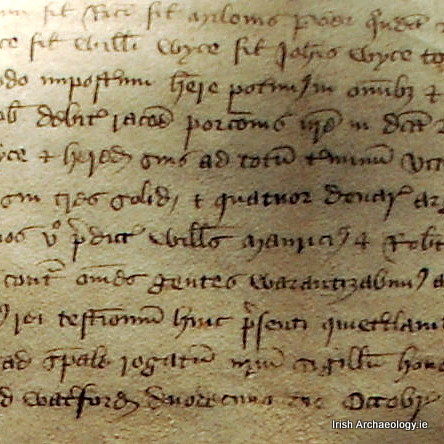
A 15th century deed between the Power and Wyse families relating to lands at Dunhill, Co Waterford
232 notes
·
View notes
Photo
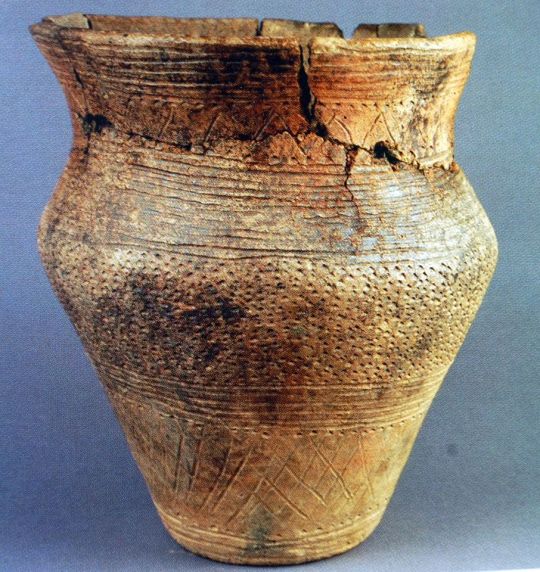
An Early Bronze age decorated pottery urn from Kilmurry, Co. Wexford. It was discovered inside a stone-lined pit (cist), which was excavated by the National Museum of Ireland in 2001. The vessel contained the cremated remains of child, who was aged between 6 and 10 years old when they died. Subsequent radiocarbon analysis of the bone indicated that the burial took place sometime around 2016-1756 BC. The site was published in Cahill, M & Sikora, M. (2011) Breaking Ground, Finding Graves, Volume 1, pp 585-593.
167 notes
·
View notes
Photo
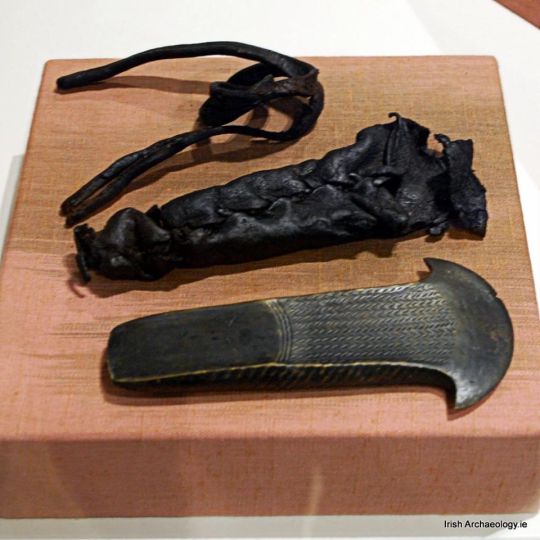
The Brockagh axe is one of my favourite artefacts in the National Museum of Ireland. It dates from the Middle Bronze Age and was discovered deep within a peat bog at Brockagh, Co. Kildare. What is very unusual about the axe is the fact that it was found within a small leather pouch that appears to have been specifically made to hold the artefact. The pouch is fashioned from a single piece of cow hide and tapers to reflect the shape of the blade. The axe itself is made from cast bronze and its surface is profusely ornamented on both sides with vertical lines of herringbone design.
Why exactly this highly decorated axe was kept inside a leather sheath remains uncertain. It is possible that it was simply a means of transporting the axe prior to hafting, or it may indicate that the artefact was used as a hand tool. However, it could also imply that the axe was never intended as a utilitarian cutting implement and was instead some form of status symbol. If this was the case then this beautiful object may only have only been removed from its pouch on certain occasions for display purposes.
Whatever the original function of the axe, today it can be viewed at the National Museum of Ireland, Kildare Street, Dublin.
453 notes
·
View notes
Photo


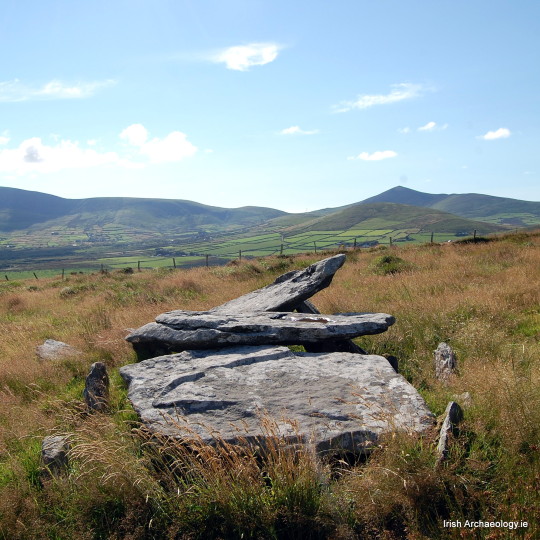
The remains of an Early Bronze Age wedge tomb overlooking Dingle harbour, Co. Kerry
881 notes
·
View notes
Photo

‘You will never plough a field turning it over in your mind’, Irish proverb
407 notes
·
View notes

